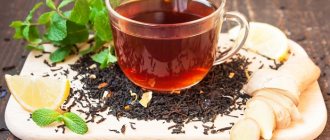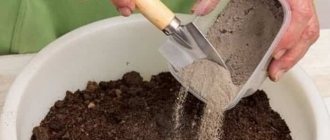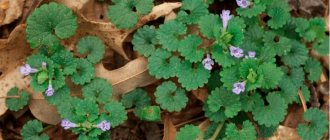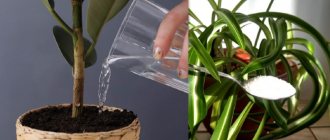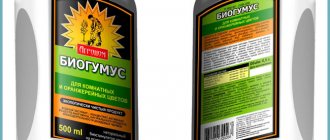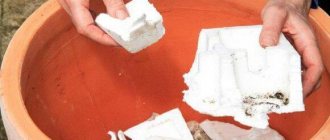What is this product?
Castor oil is obtained from a plant called castor bean. The culture itself is extremely poisonous; consumption of its fruits, even in small quantities, can lead to death in humans. But during the production of a castor bean product, all toxins are inactivated, so that the final composition becomes harmless, and sometimes even beneficial.
You will be interested in: Tetrastigma Voinier (indoor grapes): description, rules of care at home
Castor oil is a mixture of triglycerides, linoleic, oleic and ricinoleic acids. The name apparently comes from the word "castoreum", meaning in English beaver stream, which was replaced with the oil in question. The product is also sometimes called ricin oil.
The consistency of the substance is a viscous transparent or yellow liquid. The smell is weak and the taste is unpleasant. The substance freezes at -16 °C and boils at +313 °C. The product does not oxidize in the light, does not dry out, and when burned, disappears without a trace; petroleum products do not dissolve it.
You may be interested in: Howea Forstera: photo and description, home care
When castor oil gets into the soil:
- Accelerates the ripening of buds.
- Activates plant regeneration.
- Acts as an antibacterial agent.
- Accelerates the delivery of nutrients from the soil.
- Helps plant growth.
- Restores lifeless flowers.
- Accelerates the process of cell division.
- Improves soil composition.
Origin and properties of matter
Castor oil is made from castor bean seeds. This culture has been known since ancient times, however, before it did not have such significance. Oil from its fruits began to be extracted much later, and its unique properties remained a secret even longer. So, castor bean seeds contain from forty to sixty percent castor oil. Its exact amount is determined by the plant variety and its location.
Many people wonder why castor oil is called castor oil. Researchers explain this phenomenon this way: castor oil was previously imported from Canada, which was called the “country of beavers” because of the widespread distribution of these animals there. And the word “castor” is precisely the scientific name of the beaver.
Recipes for use
Feeding flowers with castor oil can be done in several ways. Next, various recipes will be offered.
First option:
- Add a teaspoon of oil to a liter of settled water. It is better to mix in a spray bottle.
- During the fertilization process, the plants are first watered with water to moisten the soil and thus protect the roots from burns.
- Shake the container until the greasy circles disappear.
- Two hours after watering, the shoots and soil are treated with castor oil solution from a container with a sprayer.
Treatments are carried out during the formation of buds and during the active growing season.
Be sure to take into account the characteristics of the plant itself and the slowdown in winter growth.
Why is castor oil used in agriculture?
The product is widespread in many industries: medicine, food and chemical industries. It has also found application in gardening.
Castor oil is a bactericidal drug. When used, there is an effective effect on fungi, viruses, and pathogenic microorganisms. It has the following effect on garden and vegetable plantings:
- helps growth;
- promotes healing of affected areas;
- improves the absorption of essential microelements;
- increases immunity;
- has an antiseptic effect;
- accelerates metabolism, cell division;
- during the growing season increases the number of shoots;
- improves soil structure;
- protects against diseases;
- stimulates the formation of new cells;
- restores tired and almost lifeless plants;
- transforms appearance;
- After feeding, the leaves become juicy, dense, and acquire a rich green color;
- has a low cost;
- provides abundant and long flowering, full buds.
Second recipe for fertilizer
You can prepare fertilizer with a large amount of nutrients. For this purpose, you should mix castor oil not with water, but with useful solutions. The necessary components are available in every home. For example:
Before fertilizing, it is important to make sure that the plants really need it. You should not fertilize during hibernation, as this can harm the flower.
Mandatory conditions for the use of castor oil
In order for the fertilizer to be beneficial, you should follow some rules:
- Stir the oil thoroughly in water or other liquid. Otherwise, if a drop of undissolved oil gets on the plant, it will cause a chemical burn.
- It is very important to adhere to the dosage and timing of fertilizing. If the plant blooms, it is fertilized before and after this period. Fertilizing is carried out no more than once a month.
- The prepared solution of castor oil for flowers is used immediately, shaking at the same time.
- Water for preparing fertilizer is taken to stand for a week.
- During the period of suspended animation, no additional feeding is applied.
Useful video
Find out in the video why castor oil is used for orchids: Interesting facts in the video about aspirin: Video review about the substrate Aurica Gardens: Find out in the video what multiflora is:
To make the plants bloom even more beautifully and luxuriantly, gardeners recommend fertilizing during the budding period. One of these fertilizers is castor oil, thanks to which flowering becomes lush and longer, and the flower heads turn out to be large and get a more saturated color.
Preparation: Fill a liter plastic bottle with settled water at room temperature and add 1 tsp to it. castor oil. Next, close the lid tightly and shake the contents thoroughly. Castor oil should be broken into small fractions and mixed well with water so as not to burn the roots of the plant. Immediately after shaking, before the castor oil rises, water the flowers.
If the plant blooms once a year, then one such feeding is enough. If the plant blooms constantly, then you can feed them with castor oil once a month.
Phalaenopsis is an epiphyte that grows on a tree; it does not need soil. These orchids grow at home in bark without adding soil. If you see bark with added soil on sale, it’s for terrestrial orchids. Not for your orchid! Look for clean bark. If the bark is taken from the forest, it must be boiled. it's too labor intensive. The pots must be transparent with holes, as the roots are involved in photosynthesis.
Place it on the sunny side, but protect it from direct sun with a translucent curtain, otherwise there will be burns.
In the summer, you often water your other indoor flowers with a hot shower, it’s very useful! except for those with pubescent leaves.
After this, be sure to blot the growth point with a cotton swab to remove all the water, otherwise the phalaenopsis will rot.
After the store, the new orchid must be inspected after being removed from the bark. Cut off all rotten places to the healthy part of the root and sprinkle thickly with cinnamon (it acts as an antiseptic)
Phalaenopsis blooms for up to 7 months. The peduncle is laid under the condition of a temperature difference of 5*C day/night, which happens in August. Moreover, in winter you need lighting up to 12 hours of daylight.
In general, these are very unpretentious flowers that please the eye for a very long time! It takes a long time to explain, but it’s easy to care for them!!
Many gardeners, wanting to help their indoor plants enrich themselves with useful substances, buy expensive fertilizer compounds. However, there is a simple and inexpensive means for feeding home flowers, the effect of which will be no worse than the advertised compositions. We are talking about castor oil. It turns out that it can be used to improve the condition of indoor plants. We'll look at how to water flowers with castor oil in this article.
What to consider when choosing a product?
To purchase high-quality castor oil, you should contact a pharmacy chain. You should not buy the product at unverified retail outlets, since there it may be diluted with aromatic components. Only high quality oil is suitable for fertilizing.
To check the authenticity of castor oil, add a small amount of it to a glass of water. The natural product does not form an oil film on the surface.
The shelf life of castor oil is 2 years. All beneficial properties of the oil are preserved during this period. It must be stored in the refrigerator or other cool place.
When it comes into contact with the skin, castor oil does not cause irritation unless there is an individual intolerance to the substance. However, it is better to wear protective gloves when using it.
Recommendations
Despite the fact that castor oil is one of the few products that are rarely counterfeited, you should still buy it in pharmacies. Since special aroma departments may offer its mixtures with other vegetable fats.
Such a product can be sold under a variety of labels, but the most common are Oleum Ricini, Ricinus Communis, Castor Oil, Agno Casto or Palma Christi.
Castor oil is a fairly resistant compound to the effects of any atmospheric phenomena, but over time, even such a stable substance loses its useful economic qualities. In order for castor bean extract to fully exert its beneficial effect on ornamental species, it should be stored for no more than 2 years.
At the same time, it is necessary to create appropriate conditions for it. This is a darkened, sealed bottle and a cool place, protected from direct sunlight, with a temperature of about +5 ° C (refrigerator is ideal).
When should you water flowers with castor oil?
Indoor plants, unlike their garden counterparts, are limited by the size of the pot. And sometimes they lack vital nutrients. In this case, castor oil will come to the aid of the gardener. It can revive a sick or weak plant.
The use of castor oil for flowers is relevant in the following cases:
- if the plant stems break;
- leaves wither for no apparent reason;
- the green part of the flower has drooped;
- plantings do not increase growth;
- after frequent replanting of indoor flowers;
- when the root system is damaged.
If the listed symptoms are observed, the plant will need at least three months to recover. Watering flowers with castor oil can successfully replace the use of the well-known composition "Epin".

